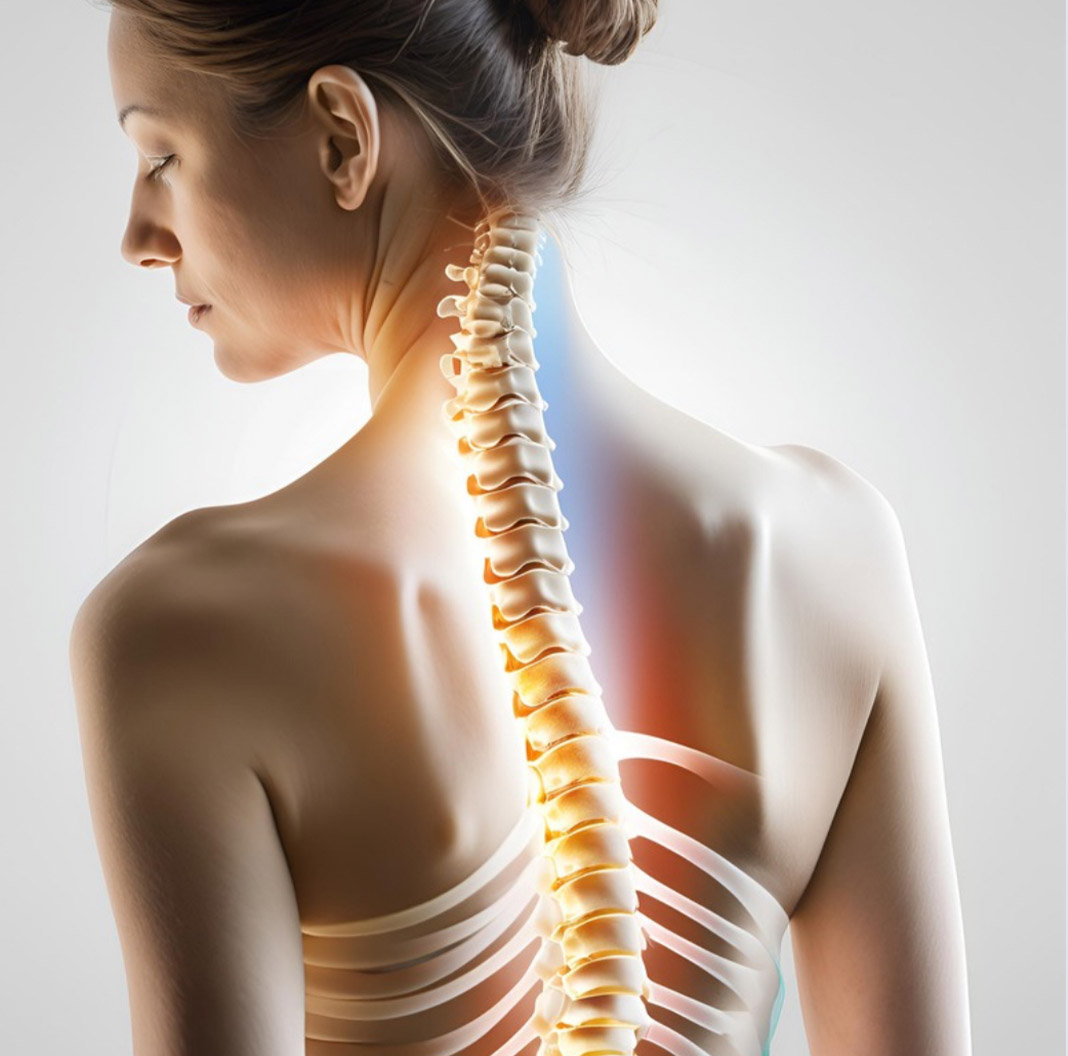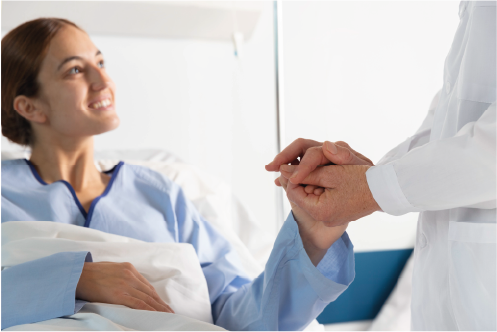Scoliosis is the loss of normal alignment of the spine in the frontal plane, i.e. when we look at a person from the front. In this plane the column must be practically straight. When curvatures of the spine occur, we speak of scoliosis.
Neuroclinica Quirúrgica Barcelona has taken another step in the fight against scoliosis by applying a pioneering surgical technique that allows correcting the curvature of the spine in younger patients.
Quality of life
Neurosurgeon Roberto Lastra leads the team that performs the procedure, which consists of the introduction of an elastic rope that tightens the vertebrae and does not limit the patient’s movements, allowing them to lead a normal life. This is a hopeful medical breakthrough.

Idiopathic scoliosis
The cause is unknown. It can be further subdivided into 3 types:
Congenital scoliosis
It is the one that is presented at the time of birth.
Generally, it is associated with the malformation of a vertebra.
Degenerative scoliosis
It is scoliosis that occurs in patients who, due to injuries typical of adulthood (such as osteoporosis, disc degeneration, compression fractures, etc.), develop scoliosis during adulthood.
Neuromuscular scoliosis
This is due to a condition affecting the nerves or muscles of the back, such as cerebral palsy or muscular dystrophy. Neuromuscular scoliosis is of the ‘structural’ type when there is rotation in addition to spinal curvature and ‘non-structural’ if there is no spinal rotation. Non-structural scoliosis may be due to problems including:
Other causes of scoliosis include damage or uneven growth of the spine caused by trauma or tuberculosis infection of the spine.
Scoliosis surgery without fixing the spine,
the best solution for young patients.
Neuroclínica Quirúrgica Barcelona has taken another step in the fight against scoliosis by applying a pioneering surgical technique that allows correcting the curvature of the spine in younger patients.
Neurosurgeon Roberto Lastra leads the team that performs the procedure, which consists of the introduction of an elastic rope that tightens the vertebrae and does not limit the patient’s movements, allowing them to lead a normal life. This is a hopeful medical breakthrough.
“Our novel technique, called Vertebral Body Tethering(or anchoring of the spine), involves surgery from the side of the body. An incision is made, not on the back, as is usually done, but on the side. The spine is reached through the thorax or the back of the abdomen. This procedure involves placing anchors vertebra by vertebra, covering the entire curvature of the scoliosis, and then placing a special elastic cord that passes between all the anchors and tightens, so that the curvature is corrected,” says Dr Lastra.
“The main advantage of scoliosis surgery without fusion compared to arthrodesis or surgery with fusion of the spine, which is the classic technique used in scoliosis, is that it does not limit the movement of the spine. By not fixing the vertebrae to each other, they do not eliminate movement between them. The conventional fusion technique fixes all the vertebrae of the curvature to correct it and therefore movement between them is eliminated. Furthermore, fusion surgery has the problem that the intervertebral discs superior and inferior to the Vertebrae that have been fixed degenerate over time and, therefore, after 10 or 20 years the pain may reappear and, sometimes, a re-intervention is required to solve this degeneration of the adjacent discs. Anchoring the spine is a new technique, and it will not cause problems in the future since the vertebrae are not fixed,” says the doctor.”
The patient could begin to lead a normal life after three to four weeks.
The neurosurgeon indicates that, in the postoperative period, the patient starts walking on the second day. You will usually be admitted to hospital for five days to a week. “After two weeks, rehabilitation can begin and after three to four weeks, the patient can start to lead a normal life”.
“As this surgery does not limit movement, after this postoperative period, the patient can continue with their normal life and perform all kinds of movements with the spine, which will not be limited, and all kinds of exercises. Therefore, they can do any type of sport and it is not necessary to wear a corset,” concludes Roberto Lastra.


This page aims to unite scoliosis sufferers in the face of this disease. We often find that society, and even the sufferers and their families, are largely unaware of all the problems associated with this spinal condition.
The main objective is to provide information (medical, labour, legal, family) through the Facebook page.

© NEUROCLÍNICA QUIRÚRGICA BARCELONA 2026 | ALL RIGHTS RESERVED | DESIGNED BY VILAX